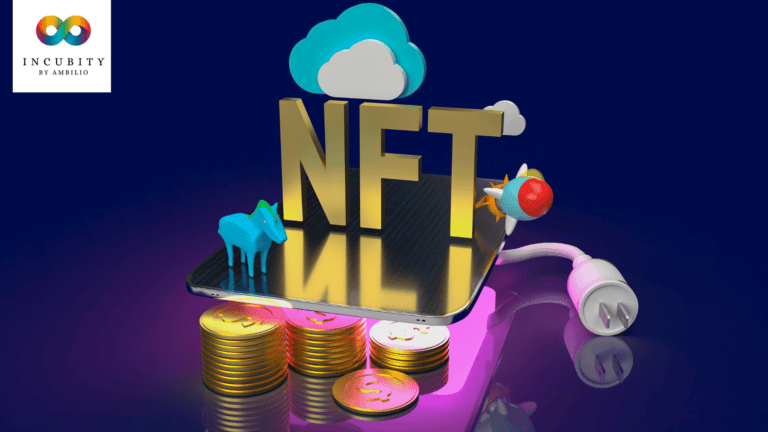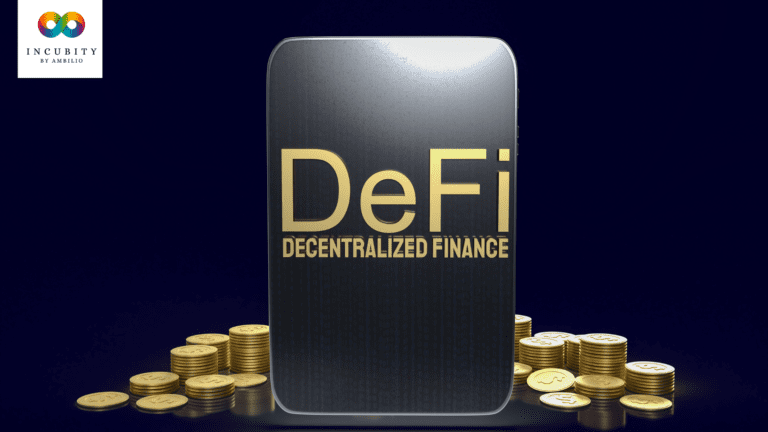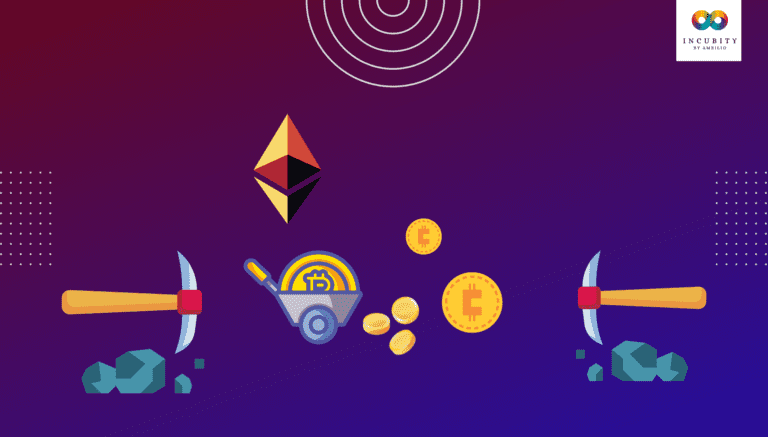Cryptocurrency has been making waves in the financial world since its inception with Bitcoin in 2009. A cryptocurrency is a digital or virtual currency that uses cryptography for security and operates independently of a central bank. With the increasing popularity and value of cryptocurrencies, many individuals and organizations are now considering creating their own digital currency.
This article will provide a comprehensive guide on how to create your cryptocurrency. It will cover the basics of cryptocurrency, the prerequisites for creating a cryptocurrency, the steps involved in creating a cryptocurrency, the challenges and considerations, and ongoing development and maintenance.
Creating a cryptocurrency can be a complex process that requires technical knowledge, funding, and a clear use case. However, with the right approach and resources, it can also be a rewarding and lucrative venture. Whether you are a developer, entrepreneur, or just a cryptocurrency enthusiast, this guide will provide valuable insights and information for creating your own cryptocurrency.
Understanding the Basics of Cryptocurrency
Before creating your own cryptocurrency, it is important to have a good understanding of the basics of cryptocurrency and how it works.
Cryptocurrency operates on blockchain. One of the key features of blockchain technology is its decentralization. Unlike traditional currency, which is controlled by a central authority, such as a central bank, cryptocurrency operates on a network of nodes, or computers, that work together to maintain the blockchain. This means that there is no single point of control or failure in the network, making it much more secure and resistant to tampering or corruption.
Another important feature of blockchain technology is its transparency. All transactions made with a cryptocurrency are recorded on the blockchain, and the ledger is publicly accessible for anyone to view. This allows users to see exactly how much of the currency is in circulation, who owns it, and how it is being used.
There are two main types of cryptocurrencies: coins and tokens:
Coins are independent digital currencies, such as Bitcoin and Ethereum, that operate on their own blockchain. These coins have their unique features, uses, and rules, and are typically used as a medium of exchange or a store of value.
Tokens are units of the cryptocurrency that can be traded or used for various purposes including fundraising, rewards, and access to services. They are built on top of existing blockchains. Tokens are often created through Initial Coin Offerings (ICOs), as a way for investors to participate in the development and growth of the currency. Tokens can also be used to represent ownership, access, or rewards within a specific ecosystem or platform.
It is important to note that although the two words (Coin and Token) are commonly used interchangeably, they are not the same thing. While all coins may be considered tokens, not all tokens are considered coins. Coins have their own blockchain, while tokens are built on an existing blockchain. Creating a coin is considered harder than creating a token. you may find a blockchain with hundreds or thousands of tokens, but with only one coin (The Ethereum blockchain for example).
Some key concepts related to cryptocurrency include mining, and wallets. Mining refers to the process of verifying and adding transactions to the blockchain, while Wallets are digital storage spaces for cryptocurrency, which are used to store, send, and receive the currency.
Cryptocurrency works on a peer-to-peer network, where each node in the network maintains a copy of the blockchain. When a user makes a transaction, it is broadcast to the network, where it is verified and added to the blockchain by the nodes. Miners who verify and add transactions to the blockchain are rewarded with new tokens for their work. This reward system incentivizes nodes to contribute to the network and maintain its security and stability. The more nodes there are in the network, the more secure and stable the cryptocurrency becomes. Additionally, the reward system helps to regulate the supply of the currency, as new tokens are only created as a reward for mining. This helps to prevent inflation and ensure that the value of the currency is stable over time.
Prerequisites for Creating a Cryptocurrency
Technical Skills:
To create a cryptocurrency, you need to have a deep understanding of several technical areas, including programming, cryptography, and blockchain technology. The ability to develop smart contracts and decentralized applications (dApps) is essential. Knowledge of programming languages such as C++, Solidity, or Python, and experience in developing blockchain applications is a must. You need to be familiar with the basics of cryptography, such as digital signatures, hashes, and public key infrastructure. If you lack technical skills, consider partnering with a team of experienced developers who can help you.
Funding:
Developing a cryptocurrency requires substantial resources and investments in terms of time, hardware, and personnel. To fund the development and launch of your cryptocurrency, you need to have a budget in place. This could be your funds, investment from others, or a combination of both. You will need to secure the required funds before beginning development to ensure that the project remains on track.
Legal Considerations:
Creating a cryptocurrency also involves legal considerations, as laws and regulations surrounding cryptocurrency can vary greatly by jurisdiction. You need to research and understand the legal implications of creating a cryptocurrency in your area. Consider obtaining the necessary licenses, registering with relevant government agencies, and complying with anti-money laundering and other regulations. You may also need to seek the advice of a lawyer to ensure that your cryptocurrency is compliant with all relevant laws and regulations.
Community Building:
A cryptocurrency cannot succeed without a strong and active community of users who believe in its value and are willing to adopt and use it. Building a community requires time, effort, and resources, and can include activities such as marketing, community-building events, and public relations. You need to engage with your target audience and build relationships with them to establish trust and encourage widespread adoption.
Market Research:
Before launching your cryptocurrency, it is crucial to research and understand the cryptocurrency market and how it is evolving. This will help you determine the most suitable type of cryptocurrency for your needs and goals and what features and benefits it should offer to attract users and investors. You need to identify your target audience, conduct market surveys, and analyze competitor offerings to develop a marketing strategy that resonates with your target market. An in-depth understanding of the market will also help you better understand the trends and future outlook of the industry, allowing you to make informed decisions and investments.
Choosing a Platform for Development
When creating a cryptocurrency, you need to decide whether you want to build it on a decentralized or centralized platform. Decentralized platforms operate on a peer-to-peer network, meaning that there is no central authority controlling the platform. In contrast, centralized platforms have a single entity that is responsible for managing and operating the platform.
Decentralized platforms offer greater security, privacy, and control to users, as there is no central point of failure and the platform is not susceptible to censorship. However, decentralized platforms can be more complex to set up and manage, and they require a greater investment of resources. Centralized platforms, on the other hand, are easier to set up and manage, as there is a single entity responsible for the platform’s operations. It is worth mentioning that they are susceptible to censorship and can be vulnerable to security breaches.
Here are some platforms you can build your cryptocurrency on:
- Ethereum: Ethereum is a popular platform for creating new cryptocurrencies due to its decentralized architecture, built-in programming language, and the ability to create and deploy smart contracts. Ethereum’s extensive network effects and robust community make it an ideal platform for new projects. It offers developers a range of tools and resources to help them create their own cryptocurrency, including its own programming language, (Solidity).
- EOS: EOS is another platform that is gaining popularity for cryptocurrency development. EOS is designed to be highly scalable and efficient, making it well-suited for large-scale projects. It has a low latency and high transaction speed, making it ideal for applications that require real-time transactions. EOS also offers a range of tools and resources to help developers create their own cryptocurrency, including a programming language called (WebAssembly).
There are other platforms available for cryptocurrency development, including Tron, Binance Smart Chain, and Cardano. Each platform has its strengths and weaknesses, so consider your goals and resources when selecting a platform. Additionally, ensure that the platform you choose has a strong community and supportive ecosystem that can provide resources and support as you develop your cryptocurrency. Consider factors such as the platform’s security, scalability, and the level of support it offers to developers when choosing a platform.
And finally, if you have the technical skills and resources, Custom Development can be an option for creating a cryptocurrency. Custom development allows you to have complete control over the design and implementation of your cryptocurrency, but it requires a significant investment of time, resources, and expertise. If you have a unique and complex project that cannot be achieved on existing platforms, custom development may be the best option. However, it’s important to consider that custom development can be more expensive and time-consuming, and it requires a higher level of technical expertise.
Designing the Cryptocurrency Token
In this section, we will explore the different steps in designing a token of a cryptocurrency:
Token Standard:
The first step in designing a cryptocurrency token is to decide on a token standard. There are several token standards available, including ERC-20, BEP-20, and TRC-20. The most popular token standard is the ERC-20 standard, which is used by the Ethereum platform. ERC-20 tokens are compatible with Ethereum’s decentralized platform and can be easily traded on various decentralized exchanges. For example, the popular cryptocurrency, Chainlink (LINK), is an ERC-20 token.
Token Features:
When designing your token, consider what features you want to include. For example, you may want to include a limited supply of tokens, a mechanism for token distribution, and a plan for token appreciation. Other important features to consider include token security, token transferability, and the ability to support smart contracts. For instance, the token feature of a cryptocurrency like Uniswap (UNI) includes governance rights for token holders, token staking, and liquidity provision.
Token Symbol:
The next step is to choose a symbol for your token. This symbol will represent your token on exchanges and in wallet addresses. It’s important to choose a symbol that is memorable and easily recognizable, as well as unique to your token. For example, the token symbol of Bitcoin (BTC) is easily recognizable and memorable.
Token Distribution:
Token distribution refers to the method by which you will distribute your tokens to the public. There are several methods for token distribution, including initial coin offerings (ICOs), airdrops, and mining. Consider your goals and resources when choosing a method for token distribution. For instance, the token distribution method of the cryptocurrency, Ripple (XRP), involved a large initial distribution to institutions and early adopters.
Token Economics:
Token economics refers to the design of your token’s economy. This includes the total supply of tokens, the rate at which they will be released, and the mechanism by which they will appreciate (in value). It’s important to consider how your token’s economy will incentivize users to adopt and use your token, as well as how it will ensure the long-term viability of your cryptocurrency. For example, the token economics of Dogecoin (DOGE) involves a large total supply, a low inflation rate, and a mechanism for token appreciation through community engagement and marketing.
Token Security:
Token security is a critical component of your token design. Consider implementing measures such as multi-signature transactions, smart contract auditing, and secure storage of private keys to ensure the security of your token. It’s important to prioritize security when designing your token to ensure that it is safe and secure for users. For instance, the token security of Ethereum (ETH) includes measures such as secure storage of private keys through hardware wallets, smart contract auditing through established auditing firms, and the implementation of multi-signature transactions.
Creating a Mining Plan
Mining is a fundamental aspect of cryptocurrency, as it is responsible for validating transactions and adding them to the blockchain.
To create a successful cryptocurrency, a comprehensive mining plan must be put in place. This plan should outline the details of token creation, rewards, hardware requirements, and other important factors that will impact the security and stability of the network.
Here are some key elements to consider when creating a mining plan:
- Token Creation Rate: Determine the rate at which new tokens will be created through mining. This rate should be in line with the overall supply and demand for the cryptocurrency.
- Mining Algorithm: Choose a mining algorithm that is secure, efficient, and fits the overall goals of the project. Some common algorithms include SHA-256, Scrypt, and Ethash.
- Mining Rewards: Set a rewards structure that incentivizes miners to participate in the network. This can be done through block rewards, transaction fees, or a combination of both.
- Mining Hardware: Identify the hardware requirements for mining, such as GPUs and ASICs. Consider factors such as energy efficiency, cost, and scalability when making this decision.
- Mining Pool: Determine if you want to offer the option to join a mining pool, where miners combine their computing power to increase their chances of finding a solution.
It is essential to have a well-designed and flexible mining plan that can adapt to changing market conditions and technological advancements. With a solid plan in place, your cryptocurrency will have a strong foundation for long-term success.
Developing the Cryptocurrency
Once the foundation has been laid in terms of the prerequisites and design elements of the cryptocurrency, the next step is the actual development process. This is a complex and technical endeavor that requires a strong understanding of blockchain technology and programming skills.
Here are the steps involved in developing a cryptocurrency:
- Writing the Code: The first step is to write the code for the cryptocurrency using a programming language that is suited for the task. For example, Ethereum can be written in Solidity, while Bitcoin can be written in C++. To make the development process easier, consider using an open-source code as a starting point, and then customize it to fit the unique requirements of your project.
- Implementing the Blockchain: The next step is to develop the blockchain by creating a consensus algorithm that will be used to validate transactions. This involves setting up the blocks and transactions structure, as well as defining the rules for validating transactions. It is essential to ensure that the blockchain is secure, efficient, and scalable.
- Setting up the Network: Once the blockchain has been developed, the next step is to deploy the network. This involves setting up nodes that will run the cryptocurrency software and participate in the validation and verification of transactions. The network must be robust, reliable, and able to handle the demands of the cryptocurrency users.
- Testing and Debugging: Before launching the cryptocurrency, it is essential to thoroughly test the network for any bugs or security vulnerabilities. This includes stress testing the network to ensure that it can handle a high volume of transactions, as well as identifying and fixing any issues that may arise. The goal is to ensure that the network is secure and operates correctly.
- Launch: The final step is to launch the cryptocurrency and make it available to the public. This can involve listing it on cryptocurrency exchanges, marketing it to potential users, and promoting its adoption through various channels. To make the launch successful, it is essential to have a well-crafted marketing strategy in place, as well as a solid understanding of the target audience.
Launching the Cryptocurrency
Let’s explore the steps of officially introducing a new cryptocurrency to the market:
- Initial Coin Offering (ICO): This involves the issuance of a limited number of tokens, which are sold to early investors to raise funds for further development of the cryptocurrency. The ICO can be designed in various ways, such as offering a fixed number of tokens at a fixed price, auction-style sales, or dynamic pricing based on market demand. Careful planning and execution are crucial for the success of an ICO.
- Listing on Exchanges: The next step is to get the cryptocurrency listed on popular exchanges to increase its accessibility and liquidity. The process of getting listed on exchanges can vary, but it typically involves filling out an application, providing the necessary information, and paying a listing fee. It’s important to choose the right exchanges, based on factors such as reputation, security, and liquidity.
- Community Building and Marketing: A strong community is crucial for the success of any cryptocurrency, therefore, creating a strong marketing strategy to increase awareness and adoption is important. This can involve a variety of tactics, such as building a social media presence, hosting events, offering incentives and rewards, and creating educational content.
- Maintenance and Upgrades: Ongoing development, maintenance, and upgrades are essential to keep the cryptocurrency secure and relevant. This involves fixing bugs, implementing new features, and addressing any security concerns. It’s important to have a dedicated development team in place to handle these tasks.
- Compliance with Regulations: It’s important to ensure that the cryptocurrency complies with relevant laws and regulations to ensure its longevity. This can involve obtaining licenses and certifications, reporting financial information, and following anti-money laundering and counter-terrorism financing regulations.
By following these steps, a successful launch can be achieved and the new cryptocurrency can be introduced to the market, attracting new users and increasing its adoption. A well-planned launch can increase the confidence of users and investors, and help lay a solid foundation for future growth.
Final Words
Creating your own cryptocurrency can be a complex and challenging process, but it can also be an exciting and rewarding venture. It requires a deep understanding of blockchain technology, as well as a clear vision of the purpose and function of your cryptocurrency. This article has provided an overview of the steps involved in creating a cryptocurrency, including choosing a platform for development, designing the token, developing the cryptocurrency, and launching it.
When embarking on this journey, it’s important to have a solid understanding of the technical and financial aspects involved, as well as a well-thought-out plan for mining and distribution. It’s also crucial to be aware of the legal and regulatory landscape surrounding cryptocurrencies and to have a clear strategy for promoting and marketing your new currency.
With the right approach, creating a cryptocurrency can be a rewarding experience that has the potential to make a significant impact on the financial world. Whether you’re a seasoned developer or just starting, there is a lot of potential for innovation and growth in the world of cryptocurrencies. We hope this article has provided valuable insights and guidance as you begin your journey to create your own cryptocurrency.







